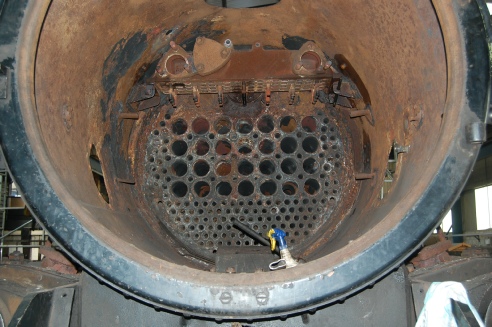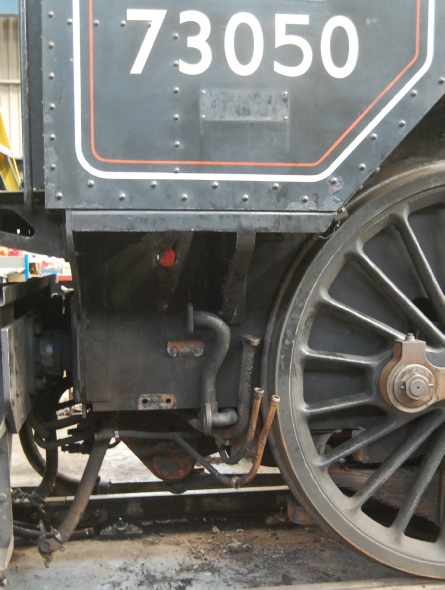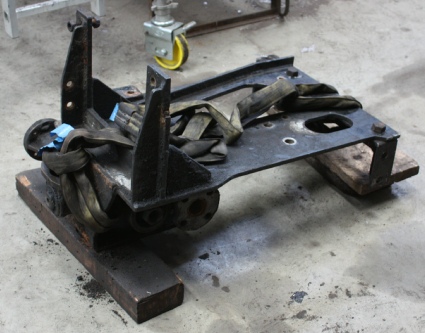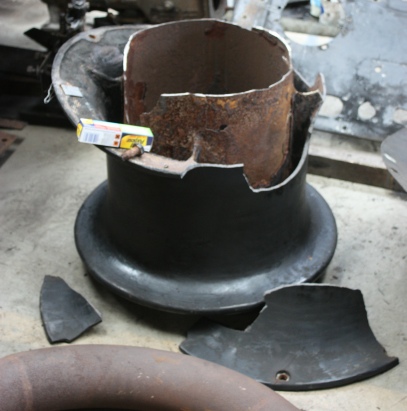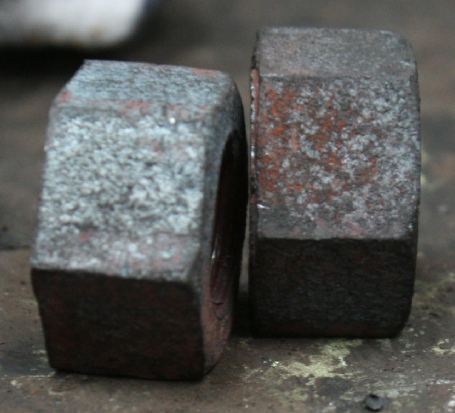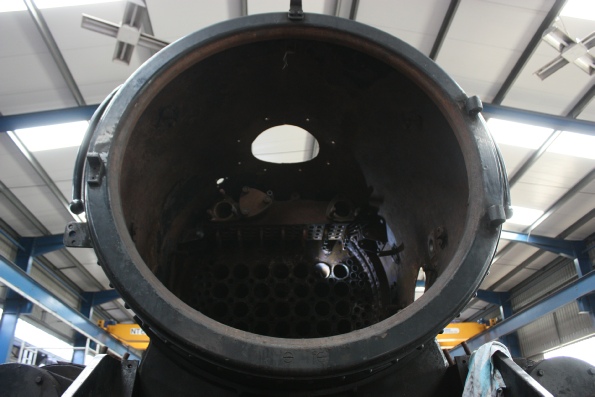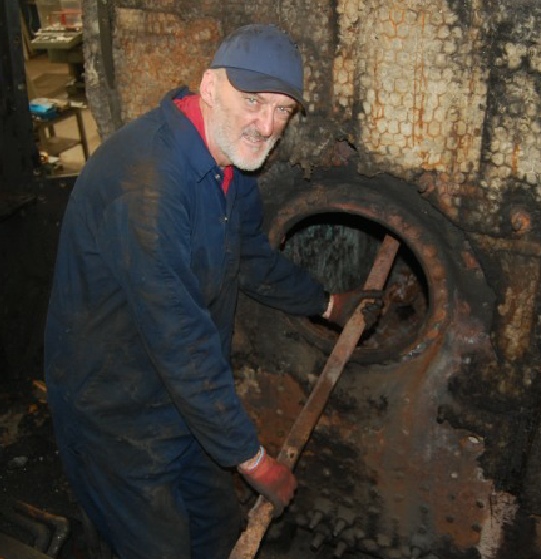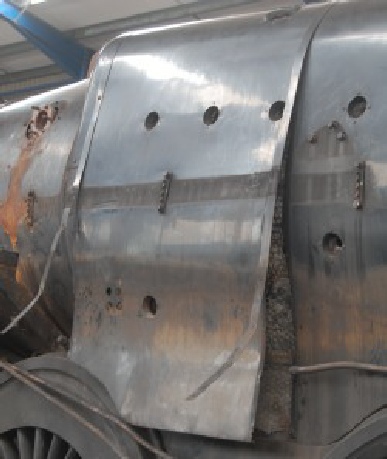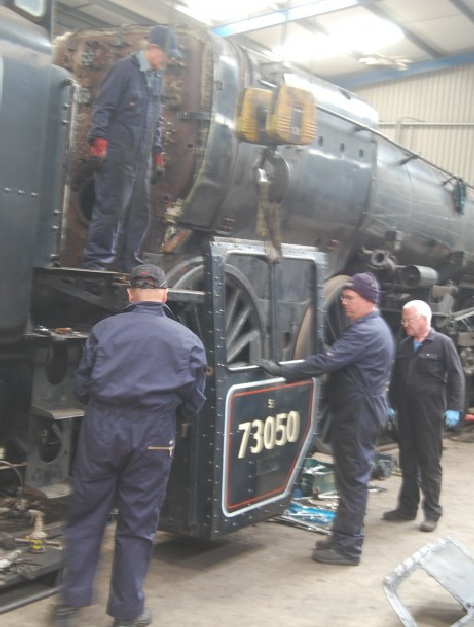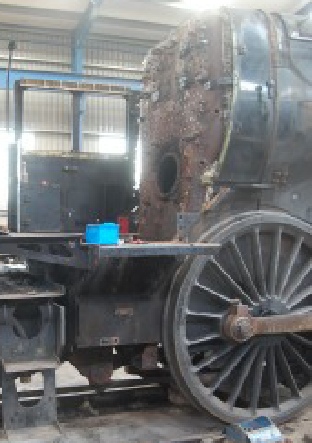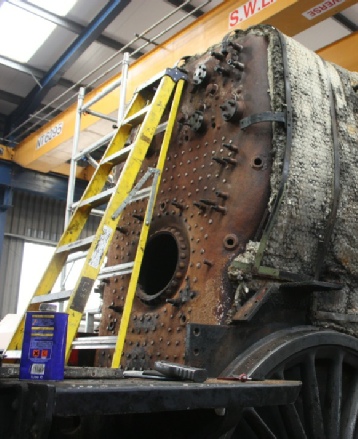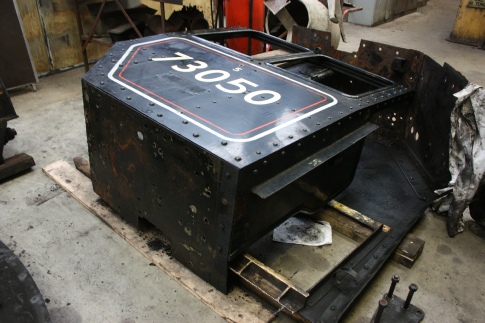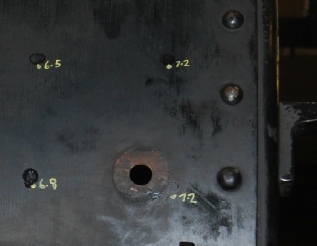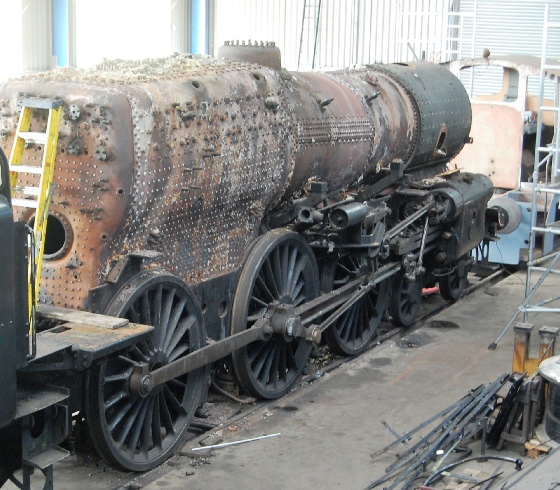5th July 2017.
Great momentum in the team has seen much taken from the loco since the last report.
The boiler is very nearly free of the frames, about 10 bolts remain holding the smokebox onto the saddle; at the firebox end, the tie-down bars are removed.
Inside the smokebox, all internal components except the superheater header have been removed, and only two bolts hold that in place. Removal of the header will be challenging, too heavy to manhandle and not easily slingable on the overhead crane because the header is overhung by the smokebox. A JCB loader with fork-lift attachment will probably be used but access to the front of the loco is obstructed by the chassis of Diesel shunter ‘Muriel’.
At the cab end, the backhead is clear of fittings and most of the cladding has been removed. The frame stretcher is removed as are the tie-bars that hold down the firebox while allowing longitudinal movement as the boiler expands and contracts in service. Once the cladding is removed, the cab sides will be taken down and the remainder of the floor lifted.
The boiler top is clear of fitting and the regulator and operating linkage have been removed. With access to boiler-top no longer required, work has started on handrail removal to be followed by the cladding and lagging.
Under the cab, most pipework is detached, the number of pipes and the connection confusion presenting many challenges to the dismantlers as they try to describe yet another pipe for the log sheet.
Nearly-empty smokebox. Handrail is still attached but will be removed as soon as all boiler-top work is finished.
The tubeplate shows the 28 large holes which the superheater flue ends and 151 smaller firetube ends.

